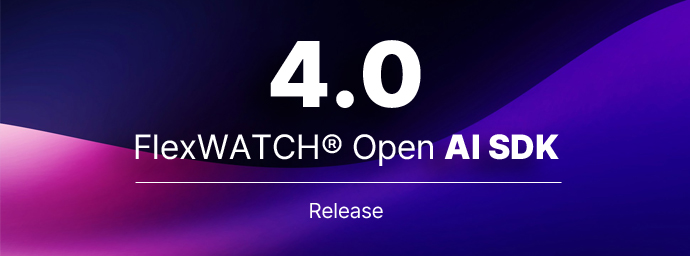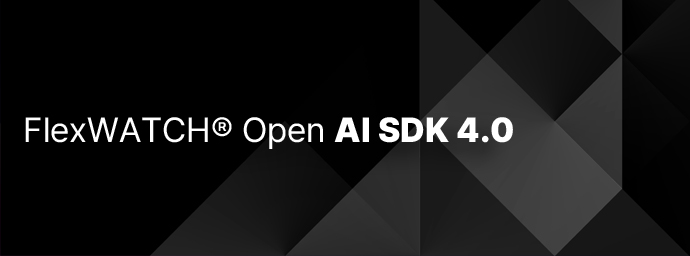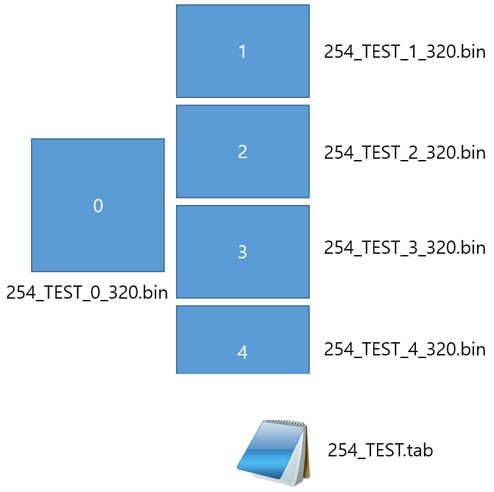News
We will be a company that connects the world as one.

News Letter
Providing a development environment capable of porting and post-processing multi-level inference AI models (FlexWATCH® OPEN AI SDK 4.0)
2024.03.19 14:45
Provides a development environment for porting and post-processing multi-level inference AI models (FlexWATCH® OPEN AI SDK 4.0)

"Customers can directly port AI models to IP cameras and perform post-process metadata without manufacturer assistance."
"Directly managing finished products containing unique AI models with a license key"
Seyeon Tech supports open AI (artificial intelligence) SDK so that customers can secure their own unique AI IP cameras. Using the open AI (artificial intelligence) SDK, customers can port their own AI learning models to IP cameras and utilize them. In general, unless you are an IP camera manufacturer, it has been practically impossible to install individually owned AI technology into IP cameras.
Seyeon Tech supports a PC learning environment and standardized conversion tool for porting AI learning models to IP cameras. The conversion tool allows customers to access the web and port the AI learning model to an IP camera and check the results. The advantage is that there is no need to share the customer's database and learning model with Seyeon Tech. If AI technology is needed at the edge, it can be implemented in the camera using the ‘Open AI (Artificial Intelligence) SDK’.
Today, we are releasing FlexWATCH® Open AI SDK 4.0, which is a more advanced version of the SDK introduced earlier. There are three main features of 4.0: Supports multi-level inference development environment, provides metadata post-processing development environment, and manages unique AI models using license keys. Before 4.0, it mainly supported a single Detection AI model. However, as demand for self-development of multi-level inference AI models and metadata post-processing rapidly increased in the market, this was reflected in the SDK. With the release of this SDK, customers can directly install desired AI functions on Seyeon Tech IP camera modules and finished products, as well as directly manage the sale of unique AI finished products with a license key.
Table of Contents :
1. Introduction to FlexWATCH® OPEN AI SDK 4.0
2. Supports for multi-level reasoning development environment
3. Supports for self-development environment for metadata post-processing
4. Supports License key to protect unique AI models
5. Others
Scope :
1. Introduction to FlexWATCH® OPEN AI SDK 4.0

The SDK provides instructions on how to configure an Ubuntu PC learning environment to port a unique AI model to an IP camera, and how to learn using a designated AI model and port the results. Below is an overview of what is included in the SDK.
a. Preparation of PC environment
b. Creating a Python virtual environment
c. MobilenetV2 +SSDLite training (Yolo will be supported soon)
d. Converting the Trained model to an ONNX file
e. Validating the Trained model
f. Converting ONNX file to binary file working over FlexWATCH® camera
g. Creating a compressed file (tar.gz) to upload to the FlexWATCH® camera
Seyeon Tech supplies 2M~12M IP camera modules and finished products. Rolling Shutter and Global Shutter are supported, so you can select a product according to your purpose and use it after porting its unique AI technology. High-pixel cameras can set ROI by considering the amount of calculation, and the frame rate can also be increased by inferring within the area. (Some functions are under development)
2. Support for multi-level reasoning development environment

a. The initial purpose of the multi-level inference development environment is to develop LPR (License Plate Recognition). As shown in the picture above, in the first step, car license plates are grouped and divided, and then LPR is performed with several separate subsequent AI models. This configuration can be used not only for LPR but also for various detection and recognition models.
- For example, when classifying animals, a model can be applied to classify birds and land animals into groups and then subdivide them.
b. Post-processing, such as cropping, to apply metadata extracted from the first-stage model (0) to the second stage has been standardized, and the functions below are supported.
- Post processing of metadata extracted from models 1, 2, 3, and 4 in Figure above (the number can be added or subtracted) can be developed by the customer.
- Supports basic inter-frame object tracking and filtering required for tracking.
- Supports ONVIF standard and self-standard transmission of final metadata that has undergone metadata post processing
c. For this purpose, we provide IP camera toolchain along with SDK.
3. Support for self-development environment for metadata post-processing

a. AI model inference results must be post-processed. For example, in LPR, AI model results have class information (numbers, letters) and location information. This result must be post-processed to accurately determine and utilize license plates.
b. Since this process varies from company to company, we provide an SDK development environment so that customers can post-process metadata themselves. If LPR is the goal, the Seyeon Tech method can also be used.
c. For this purpose, we provide Tool-chain to enable software development on RISC-V CPU. (Separate NDA and agreement required)
d. If metadata is transmitted using ONVIF or its own protocol, Bounding Box, Class information, and Confidence information can be displayed in the browser, and an API that allows various functions to be used in applications is also supported.
4. Supports License key management to protect unique AI models

a. When a customer ports an AI model to an IP camera, they may be concerned about the possibility of their own AI model being distributed. This SDK update supports direct management of unique AI model license keys ported by customers. You must register a license key for each product to operate, so you can protect your unique AI model.
b. If the quantity is small, customers can purchase individual modules and finished products and then port the AI model for distribution.
c. If the quantity is large, Seyeon Tech can create and distribute the AI model as firmware. Even in this case, management is possible with the license key.
Others


1. Seyeon Tech aims to provide a unique IP camera development environment to development-based customers who want to utilize AI technology. In other words, we want to increase the utilization of IP cameras by sharing core technologies with 3rd party partners.
2. Simple detection and intelligent rules (e.g. auto tracking) are supported by Seyeon Tech IP cameras.
3. This SDK 4.0 can be supplied through NDA agreement.
4. Supported modules, finished products are as follows
A. 2M, 5M, 8M modules ( Around 10 types of Camera modules including EX2-307, EX2-335, EX1-412 and global shutter modules)
B. 2M, 5M, 8M IP cameras ( Around 20 types of Finished IP Cameras - Dome, Bullet, PTZ cameras including FW9709, FW9307, FW7940, FW7511, FW7300 series)




 이전글
이전글
 다음글
다음글


